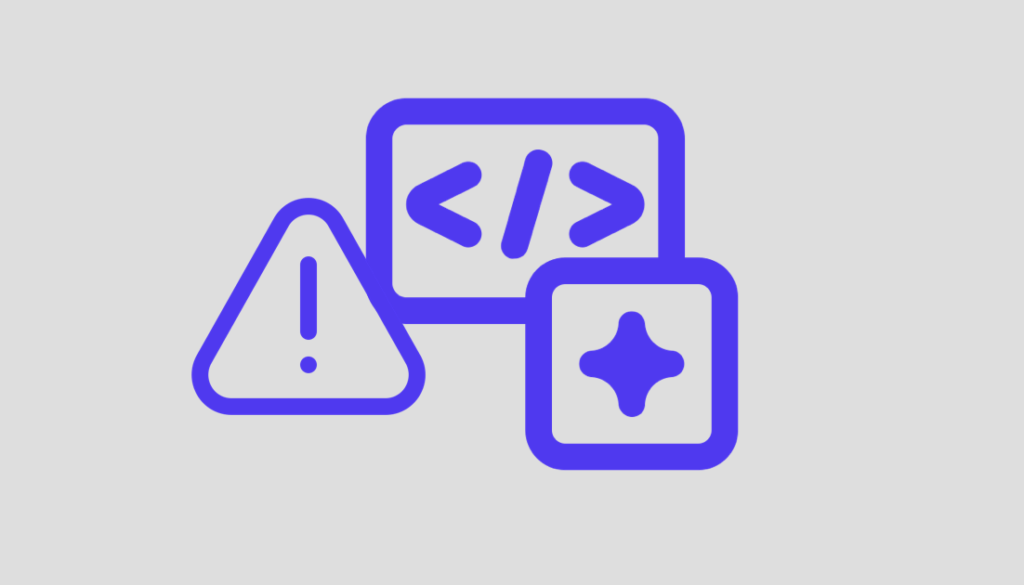It isn’t new news that Artificial Intelligence is not only transforming the way we work, but also how we go about many tasks in our personal lives as well. When it comes to software development, the impact of AI is being seen in an even more accelerated and significant way – empowering development teams, both internal and outsourced, to rapidly create, debug, and secure software products faster than ever before.
As AI-driven coding tools such as GitHub Copilot, ChatGPT, and others become integral to software engineering – business owners, investors, CTOs, and CIOs must understand the potential risks these powerful tools introduce and how to effectively manage them. While the upside is seeing your development resources output increasing, this has to be weighed up against the negatives – some of which are still yet to realized – as we embark on the new dawn of AI-coding.
In the following article we look to provide guidance for any senior executive teams who want to ensure they are armed with sufficient knowledge to be proactive in managing and understanding the risks surrounding modern software development and how to mitigate them longer term.

Key Risks Associated with AI-Generated Code
1. Cybersecurity Vulnerabilities
A major issue with relying on AI-generated code is that when a developer is generating code using AI, it is almost impossible to tell which source code or dataset the AI engine has been trained on. What this means in a real scenario is that AI-generated code can unintentionally bring back code which includes security flaws, especially when trained on datasets containing outdated or insecure examples. The reason this happens is because all AI-tools are only as powerful as the data they have access too, so it is very common that an AI-coding tool may use a reference codebase which has since been updated with the latest security patches – but the AI hasn’t accessed the latest version yet and as such will be returning results based on the older, insecure version of code. This means that developers who overly rely on AI recommendations may inadvertently integrate vulnerabilities.
Mitigation Approaches:
Enforce regular, automated security scans and penetration tests.
Enforce rigorous manual code reviews for critical functionality.
Educate teams on secure coding practices.
2. Intellectual Property and Licensing Issues
As already noted, the nature of AI coding tools is that they often leverage publicly available code repositories for training and sourcing data. The issue this raises around intellectual property is potentially serious as you could be opening yourself up to licensing infringements. We have previously written articles about why understanding Open Source Compliance is critical for businesses, but in simple terms it is because any code which is publicly available can have associated licences attached to it – So if an AI-coding tool ‘borrows’ some code from an open source package and brings it into your codebase, you are inheriting the licensing obligations of the original source. This poses legal and compliance risks which many businesses simply don’t have visibility over.
Mitigation Approaches:
Use automated license scanning tools to audit codebases.
Implement strict code provenance policies.
Educate teams about open-source licensing implications.
3. Compliance and Data Privacy
Again this issue surrounds what information you are granting AI tools permission to read. When these tools are fully embedded within your infrastructure, codebase or database then you may unintentionally be allowing it to process sensitive or proprietary information, risking regulatory non-compliance with standards like GDPR or CCPA, potentially leading to legal penalties and reputational damage.
Mitigation Approaches:
Clearly define and enforce data handling policies.
Audit data processed by AI tools regularly.
Use AI tools with transparent training processes and data policies.
4. Quality and Technical Debt
While AI coding tools can deliver very high quality code in many instances, there are no documented ‘best practices’ they have to follow – which means any output needs to be reviewed in detail. In many instances AI-generated code may not always adhere to optimal coding standards, and as such can result in actually adding to your technical debt and complicating future maintenance.
Mitigation Approaches:
Implement continuous integration and continuous deployment (CI/CD) pipelines with automated testing.
Regularly conduct static and dynamic code analysis.
Maintain clear coding standards and quality control processes.
5. Lack of Transparency and Accountability
When development is outsourced or distributed, ensuring visibility and accountability has always been a challenge. Now, by adding AI-generated code into the mix we are adding new layers of separation between a business and the code being deployed. This lack of visibility and accountability can obscure responsibility, making it harder to pinpoint quality or security issues further down the line.
Mitigation Approaches:
Set clear service-level agreements (SLAs) for outsourced teams.
Use software audit and monitoring platforms to maintain visibility.
Track contributions and code changes comprehensively.
How The Code Registry Can Help Mitigate AI Coding Risks
At The Code Registry, we recognize the complexities associated with AI-generated software development. Our platform aims to leverage the same AI-technologies to actually provide the comprehensive visibility and controls you need over your software assets. By deploying The Code Registry across your entire estate of code you will achieve full visibility of your codebase across key business critical metrics including:
Full Security Assessments: Automatically scan and identify vulnerabilities across your entire codebase, flagging risks before deployment.
Code Comparison and Tracking: Detailed analysis and comparison of every code replication allow precise monitoring of code evolution, highlighting potential issues early.
Proactive Accountability: Clearly attribute code changes and contributions, ensuring transparency and responsibility across internal and outsourced teams.
Compliance Assurance: Automated compliance audits identify potential licensing and regulatory concerns, safeguarding your organization against legal and financial risks.
Real-time Software Valuation: Our Cost-to-Replicate valuation helps you understand the true economic value of your software assets, informing strategic business decisions.
Best Practices for AI-Driven Software Development
To effectively leverage AI-generated code while minimizing associated risks, organizations should:
Foster continuous education on AI capabilities and limitations within your development teams.
Implement multi-layered cybersecurity defenses, combining automated scans with manual oversight.
Maintain transparent, auditable records of all coding activities, especially when collaborating with outsourced partners.
Regularly audit your software to proactively identify and address risks before they escalate.
Employ specialized platforms like The Code Registry to enhance your software intelligence and safeguard your digital assets.
What Should You Do?
AI-generated coding tools are undeniably powerful but carry significant risks that must be actively managed. By understanding and addressing these risks proactively—through robust policies, comprehensive oversight, and specialized tools—business leaders can confidently leverage AI’s capabilities to drive growth, efficiency, and innovation.
At The Code Registry, we’re committed to helping business leaders and technology executives gain clarity, control, and confidence in managing their digital assets in an AI-driven world. Contact us to learn more about how we can support your organization’s journey to secure, compliant, and high-quality software development.
Want to Learn More?




